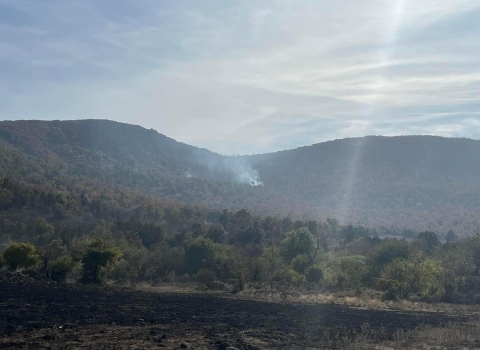The gray wolf, an iconic species of the American West, had all but disappeared from landscape in the lower 48 states by the early 20th century. Now it roams free in nine states and is stable and healthy throughout its current range. This constitutes one of the greatest comebacks for an animal in U.S. conservation history. Today, the U.S. Fish and Wildlife Service is re-affirming the success of this recovery with a proposal to remove all gray wolves from protection under Endangered Species Act (ESA).
Thanks to the partnerships involving states, tribes, conservation organizations and private landowners galvanized under the ESA, the Service is now able to propose turning management of all gray wolves back to the states and tribes who have been so central to the species’ recovery. This proposal excludes Mexican gray wolves, which would remain listed under the ESA.
“The facts are clear and indisputable—the gray wolf no longer meets the definition of a threatened or endangered species. Today the wolf is thriving on its vast range and it is reasonable to conclude it will continue to do so in the future,” said David Bernhardt, Acting Secretary, U.S. Department of the Interior. “Today’s action puts us one step closer to transitioning the extraordinary effort that we have invested in gray wolf recovery to other species who actually need the protections of the Endangered Species Act, leaving the states to carry on the legacy of wolf conservation.”
The gray wolf joins the bald eagle, peregrine falcon, American alligator, brown pelican and 33 other species of animals and plants in U.S. states, territories and waters that have been brought back from the brink with the help of the ESA. Countless more have improved or stabilized.
The gray wolf has already been delisted in the Northern Rocky Mountains. The states of Wyoming, Montana, Idaho, Oregon and Washington have shown their ability to manage this delisted wolf population responsibly so that it remains healthy and sustainable. Populations in Michigan, Wisconsin and Minnesota are also strong and wolves have begun to expand into northern California and Western Oregon and Washington. In total, the range-wide gray wolf population stands at more than 6,000, exceeding the combined recovery goals for the Northern Rocky Mountains and Western Great Lakes populations.
“It is a proud moment when we can tell our children and our grandchildren that the future is secure for these magnificent creatures,” said the Service’s Principal Deputy Director Margaret Everson. “Our deepest gratitude goes to all our conservation partners in this victory, particularly the states and tribes who are committed to wolf conservation and will continue this legacy forward.”
The measure for listing a species under the ESA is whether wolves are in danger of extinction, or at risk of becoming so in the foreseeable future, throughout all or a significant portion of their current range. The ESA does not require wolves to be present throughout all of their former range or for populations to be at historical levels for delisting to occur.
Peer-reviewed studies on a range of factors including habitat and prey availability, gray wolf adaptability (including to changing climate conditions), recovery activities and post-delisting regulatory mechanisms, and predictions about how these may affect the wolves in the future are consistent in guiding the Service’s decision to delist. By any scientific measure, wolves no longer meet the ESA’s standard for protection.
The law mandates that the Service delist species once they have recovered and turn management back to the states. Every species kept on the Endangered Species List beyond its point of recovery takes valuable resources away from those species still in need of the act’s protections.
If the wolf is delisted, the Service will continue to monitor the species for five years. Should numbers decline to perilous levels or regulatory mechanisms prove insufficient to safeguard its future, the Service can relist the species and assume gray wolf management again.
The Service’s proposal to delist the gray wolf throughout the contiguous United States will be open for public comment in the Federal Register beginning on March 15, 2019. Comments must be received within 60 days of publication until May 14, 2019. All comments will be posted on http://www.regulations.gov. This generally means any personal information provided through the process will be posted.
Information on the proposed rule and how to comment may be found at: https://www.fws.gov/home/wolfrecovery/.



